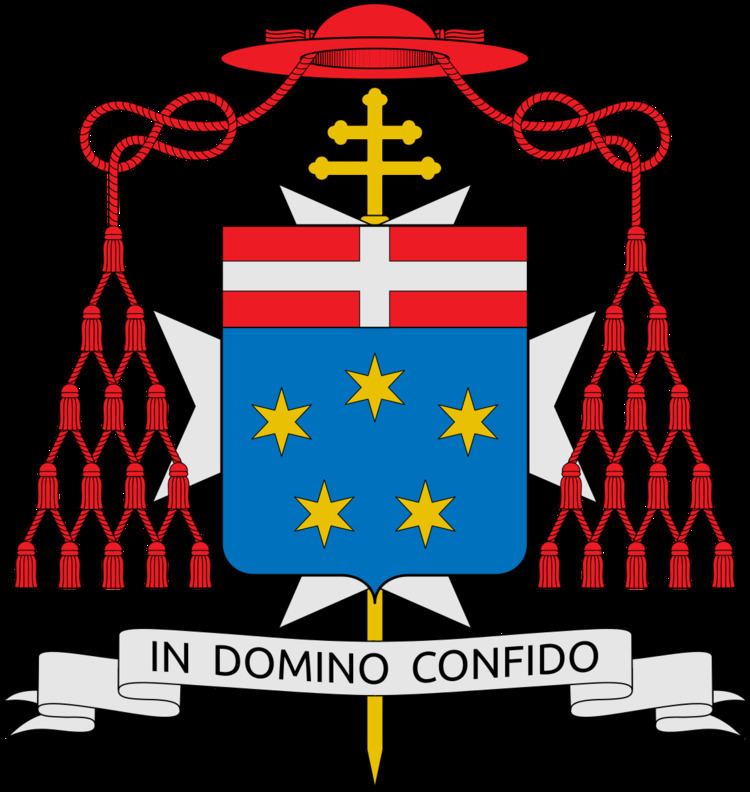Reference style His Eminence Spoken style Your Eminence | Name Clemente Micara | |
 | ||
See Velletri-Segni (suburbicarain) | ||
Clemente Micara (24 December 1879 – 11 March 1965) was an Italian Cardinal of the Catholic Church. He was elevated to the cardinalate in 1946 and served as Vicar General of Rome from 1951 until his death.

Biography
Born in Frascati, Micara attended the Pontifical Roman Seminary, the Pontifical Gregorian University, the Pontifical Lateran University, and the Pontifical Ecclesiastical Academy. He was ordained to the priesthood on 20 September 1902, and finished his studies in 1904. After entering the Roman Curia, in the Secretariat of State, in 1904, Micara was named secretary of the nunciature to Argentina in 1909. He was raised to the rank of Privy Chamberlain of His Holiness on 5 January 1910, and later Domestic Prelate of His Holiness on 21 August 1918. Micara was made auditor of the Belgian nunciature on 16 April 1915, and of the Austrian nunciature in 1916.
On 7 May 1920, he was appointed the first Nuncio to Czechoslovakia and Titular Archbishop of Apamea in Syria. He received his episcopal consecration on the following 8 August from Cardinal Pietro Gasparri, with Bishops Antonio Valbonesi and Karl Kašpar serving as co-consecrators, in the chapel of the Bohemian College in Rome. After being named Nuncio to Belgium and Internuncio to Luxembourg on 30 May 1923, Micara bestowed the Golden Rose on Queen Elizabeth of Belgium as a papal representative on 10 December 1925. He resided in Rome during the Nazi occupation of Belgium from 1940 to 1944, at which time the nuncio resumed his post.
Pope Pius XII created Micara Cardinal-Priest of Santa Maria sopra Minerva in the consistory of 18 February 1946, and then Cardinal Bishop of Velletri-Segni on 13 June of that same year, while retaining his previous cardinalatial title. On 11 November 1950, he was made Prefect of the Sacred Congregation of Religious, and Pro-Prefect of the Sacred Congregation of Rites in the Roman Curia. In 1953, he resigned as Prefect of Religious (17 January) and Pro-Prefect of Rites (26 January). Micara was also President of the Pontifical Commission for Sacred Archaeology from 1951 until his death.
Micara was appointed Vice-Dean of the College of Cardinals on 13 January 1951, and Vicar General of Rome on the following 26 January. In his capacity of Vicar General, Micara governed according to established practice the diocese of Rome, though without the title Bishop of Rome, which is reserved to the Pope, who delegates the day-to-day administration of the diocese to his Vicar. For the 1953 Italian general election, Micara urged the Catholics of Rome to "[v]ote well, vote as Catholics, vote as Romans".
After serving as a cardinal elector in the 1958 papal conclave that selected Pope John XXIII, Micara participated in the conclave of 1963, which resulted in the election of Pope Paul VI. He became known as the "Grand Elector" among the Curia because of his influential role in obtaining the conservative cardinals' votes for Pope Paul, with whom he was friends, in the latter conclave. Seen as a progressive, the Cardinal lived long enough to only attend the first three sessions of the Second Vatican Council from 1962 to 1964.
He died after a long illness in Rome, at age 85, and is buried in the basilica of Santa Maria sopra Minerva.
